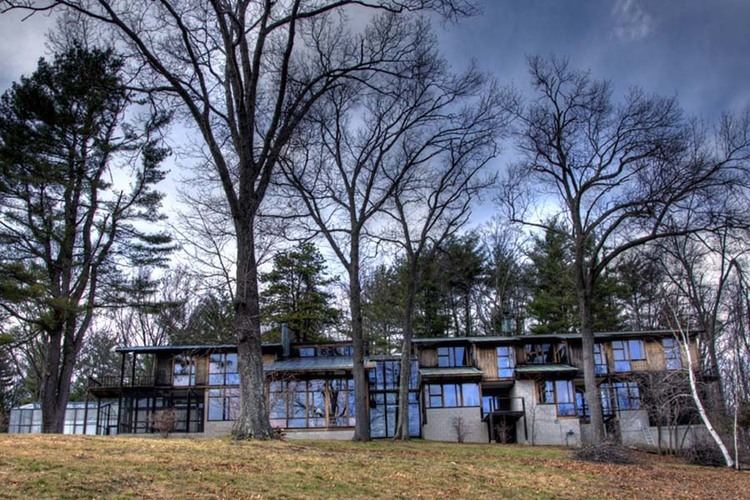Architectural style Mid-century modern | Year built 1962 | |
 | ||
No cause determined in indian hill house fire
Indian Hill House is a private residence named for the Indian Hills of Groton, Massachusetts. Designed in 1962-63 by Maurice K. Smith, the house was built by Ralph S. Osmond & Sons. Osmond, who counts Boston shipwrights among his ancestors, is the son of Hedley F. Osmond, engineering manager for such notable Boston landmarks as the Hatch Memorial Shell, Fenway Park, and restoration of the inner roof of the Boston Public Library, McKim Building. Concept and construction of Indian Hill House were commissioned in 1962 by Arthur Floyd Blackman and his wife Camilla Cunningham Blackman. The influence of Mid-Century modern architecture is readily discernible here although Smith moves beyond this with an elaboration of his own "Form Language" - an approach to design that he developed throughout his teaching at the MIT School of Architecture and Planning. As such, it is very hard to align Smith's work with any stylistic movement per se, a fact that makes his designs all the more interesting. Other aspects that makes this house unique are that the light fixtures were fabricated on site from 4" copper pipe, the windows were site built, and given the modular nature of the house in its original layout not one concrete block nor floor tile was cut. The house appears in several architectural works, including the Harvard Educational Review (1969), Spazio e Societa (June 1982) as Casa/House 1, and Progressive Architecture (March 1982), [3 images w/o notation].
An extensive photographic study of the house, then only a few years old, was taken for the Winter 1967 issue of Harvard Art Review. In it, architect Smith put forth his position that the nature of a building's form follows from its use. Since that use will change over time, buildings can also evolve. In his 1989 work, Architecture and Urbanism, Henry Plummer concluded of this house that it contained "innumerable locales, of fragmentary rooms loosely interlocked, of zones both intimate and grand, created for an almost endless array of eyes, and heads and bodies and voices, an abundance which no longer bears upon the needs of a single person. Not only does the building form evolve but it is never perceived by two persons in quite the same way." In his 1967 work, World Architecture 4, John Donat described this house as "a place that prescribes nothing, an architecture that is intense without imposing itself on you." He goes on to write that this family house is "a place of real options and opportunities [that] can be richly interpreted by whoever is living in it."
MIT School of Architecture Chair Mark Jarzombek wrote in 2013, "Indian Hill House – in a more restrained clean modernist aesthetic — is different from [Smith's] own house in many respects. A series of low, concrete walls staggered across the crest of the hill rise up to meet wooden, glazed walls of slightly different heights. The whole is protected by shed-and-gable roofs designed to appear as thin and lightweight as possible." Since 2008 the house has been under the care of historian Gus G. Widmayer who has overseen two renovation programs: The first in October 2013 for repairs to the copper roof, and again in February 2016 for the reconfiguration of bedrooms on the second floor. The original firm of Ralph S. Osmond & Sons was chosen to perform these renovations, under supervision of David W. Osmond.
Indian Hill House is set on 7 acres (28,000 m2) at the uphill woodland end of Skyfields Drive. The property complements a nearly 500-acre (2.0 km2) preserve of surrounding woodland under care of the Groton Conservation Trust, Massachusetts Audubon Society, and Groton Conservation Commission. Its Indian Hill Road access was closed and the approach changed to Skyfields Drive when the original, larger property was subdivided in March 2000.
During its planning and construction from 1962-65, Indian Hill House was referred to by architect Smith as "Blackman House 1" to be followed in the 1990's by Blackman House 2 (Manchester-By-The-Sea). Blackman House 3 (Groton) was designed by others. Fifty-three drawings and photographs of the house are kept by the MIT Libraries. The house was also and formerly known in print as 'House, Groton, Mass.', or 'A House by Maurice Smith'.
Click here to see a view from the north, and a view from the south.
